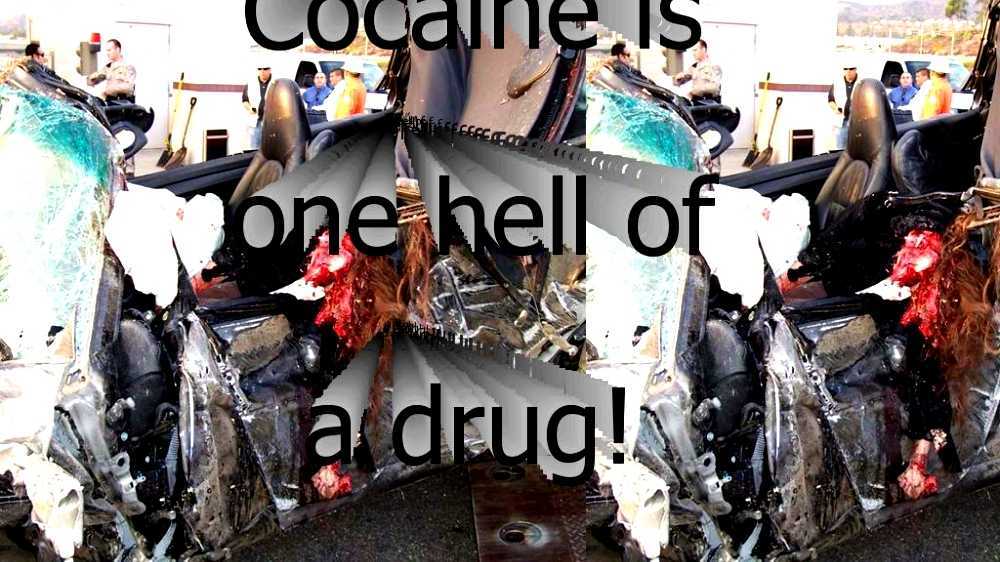Nikki Catsouras: The Tragic Story Behind The Infamous Image
The name Nikki Catsouras resonates with a haunting tale that continues to captivate and disturb the public's imagination. It is a story that involves tragedy, loss, and the far-reaching consequences of a single moment caught on camera. Nikki's life was abruptly cut short in a horrific car accident, leaving behind a legacy intertwined with the infamous image of her remains. The once vibrant young woman became a symbol of the darker side of the internet and the exploitation of personal tragedy. This article delves into the details surrounding Nikki’s life, the incident itself, and the ramifications of the images that circulated far beyond their intended context.
As we explore Nikki Catsouras's story, we must remember the impact of sharing sensitive images and the ethical responsibilities that come with it. The dissemination of the Nikki Catsouras head image not only violated her family's privacy but also raised significant questions about morality in the digital age. This article aims to provide a comprehensive overview of the events that unfolded, shedding light on the personal journey of Nikki and her family, while also addressing the broader societal implications.
Join us in uncovering the layers of this tragic narrative, as we reflect on the memories of Nikki Catsouras, the aftermath of her untimely death, and the ongoing discussions about privacy, consent, and the digital footprint we all leave behind.
Who Was Nikki Catsouras?
Nikki Catsouras was a bright and promising young woman whose life was tragically cut short at the age of 18. She was born on March 4, 1988, in California, and was known for her vibrant personality and love for life. Nikki was a high school senior with dreams of pursuing a career in fashion and design. However, on October 31, 2006, her aspirations came to a devastating halt.
Nikki Catsouras's Biography
| Detail | Information |
|---|---|
| Name | Nikki Catsouras |
| Date of Birth | March 4, 1988 |
| Place of Birth | California, USA |
| Date of Death | October 31, 2006 |
| Age at Death | 18 |
| Occupation | Student |
| Interests | Fashion, Design |
What Happened on the Day of the Accident?
The tragic accident that claimed Nikki Catsouras's life occurred on Halloween in 2006. While driving her father's Porsche 911, Nikki lost control of the vehicle on the 241 Toll Road in California. The car crashed into a concrete toll booth at a high speed, resulting in catastrophic damage. Emergency responders arrived quickly, but unfortunately, Nikki did not survive the impact.
How Did the Infamous Image Come to Be?
In the aftermath of the accident, several first responders took photographs of the scene, including images of Nikki's remains. One of these images, known as the "Nikki Catsouras head image," soon found its way onto the internet. These graphic images, which depicted the horrific aftermath of the crash, were shared widely, leading to significant distress for Nikki's family. The unauthorized sharing of these images became a subject of intense media scrutiny and sparked debates about ethics and privacy.
What Were the Consequences for the Catsouras Family?
The circulation of the Nikki Catsouras head image had devastating effects on her family. They were not only grappling with the loss of their daughter but were also subjected to relentless online harassment. The family's attempts to have the images removed were largely unsuccessful, as they had been shared across various platforms and websites. The pain of losing Nikki was compounded by the public's insensitivity and the insatiable curiosity surrounding her tragic death.
How Did the Internet React to the Images?
The reaction to the Nikki Catsouras head image was a mix of shock, horror, and morbid curiosity. While some individuals expressed sympathy for the Catsouras family, others exploited the situation for their amusement. The images became part of a dark subculture online, where graphic content is often shared without regard for the individuals involved. This led to a broader conversation about the responsibilities of those who share content online and the impact it can have on the families of victims.
What Legal Actions Were Taken?
In response to the unauthorized dissemination of the images, the Catsouras family sought legal action against several parties, including the California Highway Patrol and various websites that hosted the images. The family argued that the release of the photos constituted a violation of their privacy and inflicted emotional distress. Ultimately, the Catsouras family was awarded a settlement, but the emotional scars from their ordeal remained.
What Lessons Can We Learn from Nikki's Story?
Nikki Catsouras's tragic story serves as a stark reminder of the ethical implications surrounding the sharing of sensitive content online. It highlights the need for compassion and respect for the families of victims, as well as the importance of accountability in the digital age. As we navigate the complexities of the internet, we must consider the human impact behind every image and the lives affected by our actions.
How Can We Honor Nikki's Memory?
Honoring Nikki Catsouras's memory involves advocating for responsible sharing practices and raising awareness about the consequences of online behavior. By promoting discussions about privacy, consent, and empathy, we can create a more respectful online community. Additionally, supporting organizations that focus on mental health and grief can help ensure that the legacy of Nikki Catsouras is one of compassion and understanding.
The story of Nikki Catsouras and the infamous head image is not just a tale of tragedy; it is a call to action. It urges us to reflect on our digital behaviors and consider the emotional toll our actions can take on others. By learning from Nikki's story, we can strive to create a more compassionate and understanding world.
Article Recommendations
- East Multnomah Soil And Water Conservation District
- Short Positive Quotes About Life Challenges
- Hilarious Trump Memes


